
How to Use 12V Power Supply (1A per Channel): Examples, Pinouts, and Specs
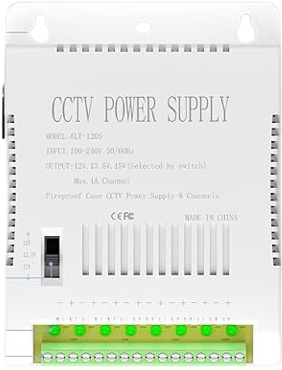
 Design with 12V Power Supply (1A per Channel) in Cirkit Designer
Design with 12V Power Supply (1A per Channel) in Cirkit DesignerIntroduction
The 12V Power Supply (1A per Channel) is a reliable and efficient device designed to convert AC voltage into a stable 12V DC output. It is capable of delivering up to 1 ampere of current per channel, making it suitable for powering a wide range of electronic devices and circuits. This power supply is commonly used in applications such as LED lighting, small motors, microcontroller-based projects, and other low-power electronic systems.
Explore Projects Built with 12V Power Supply (1A per Channel)
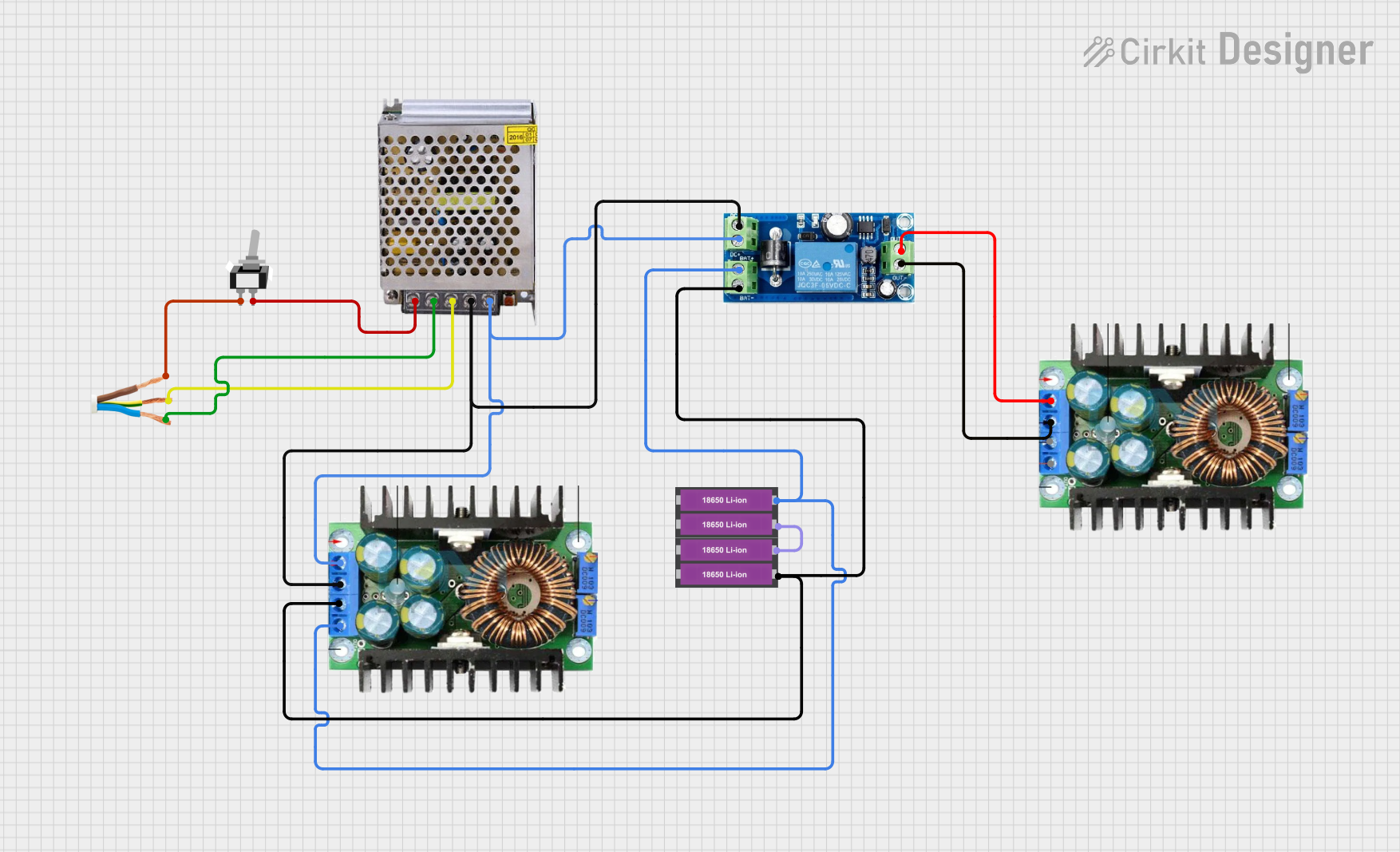
 Open Project in Cirkit Designer
Open Project in Cirkit Designer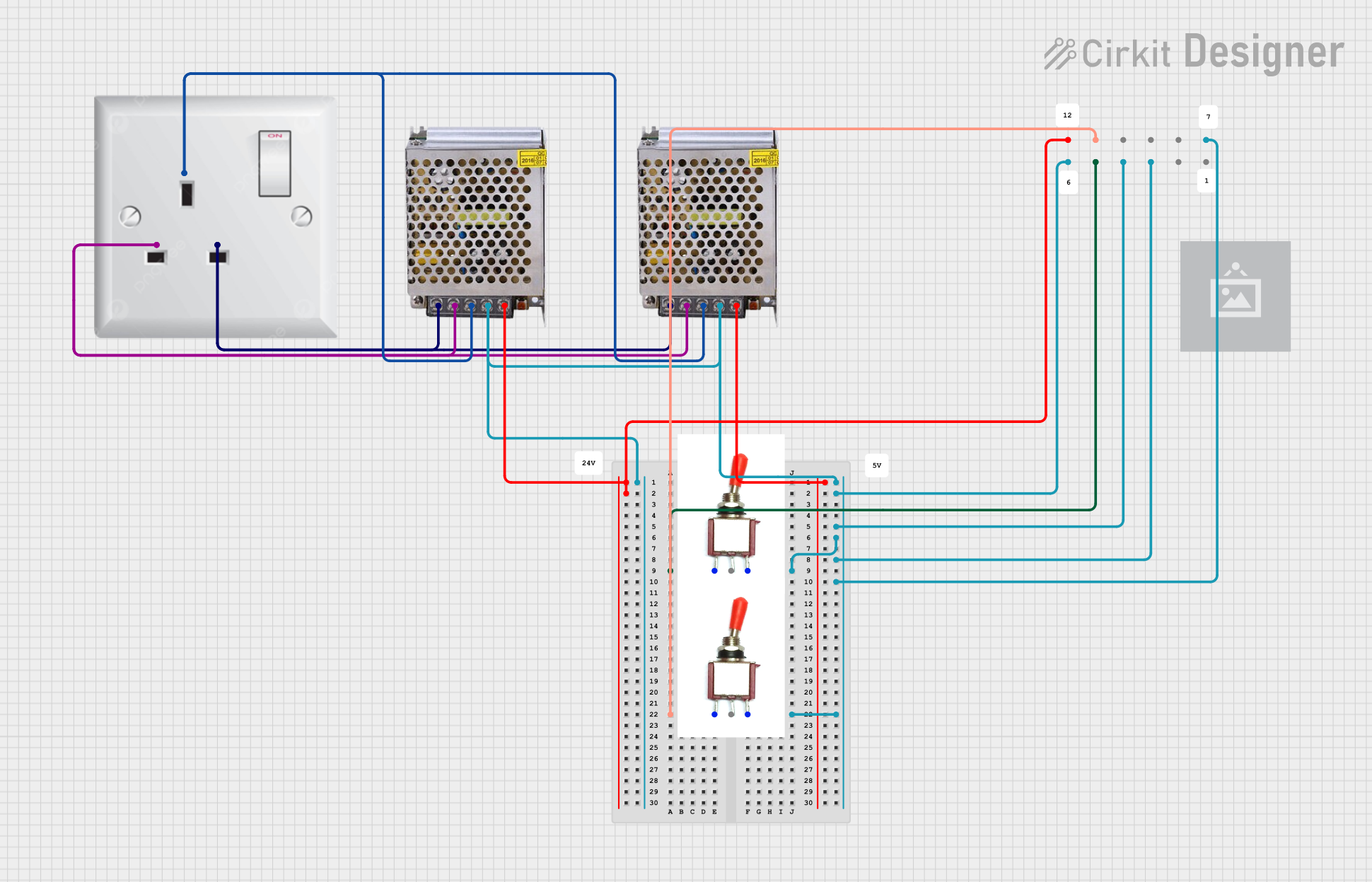
 Open Project in Cirkit Designer
Open Project in Cirkit Designer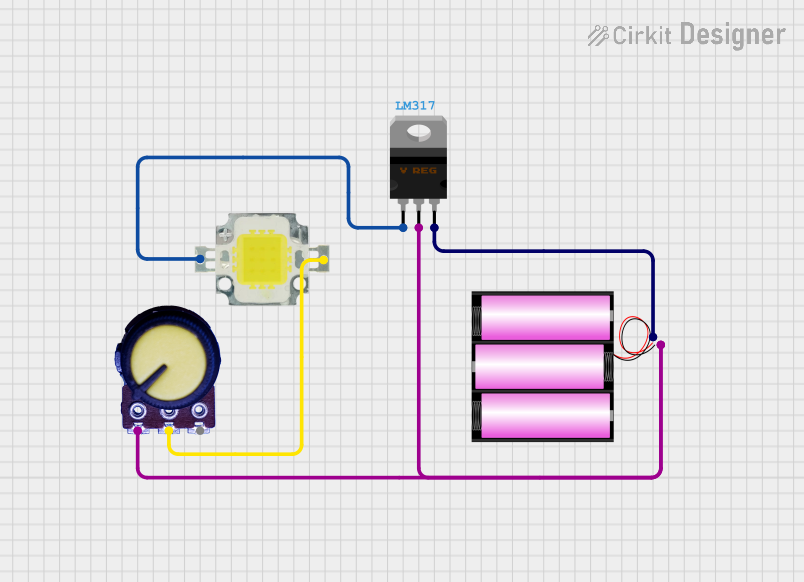
 Open Project in Cirkit Designer
Open Project in Cirkit Designer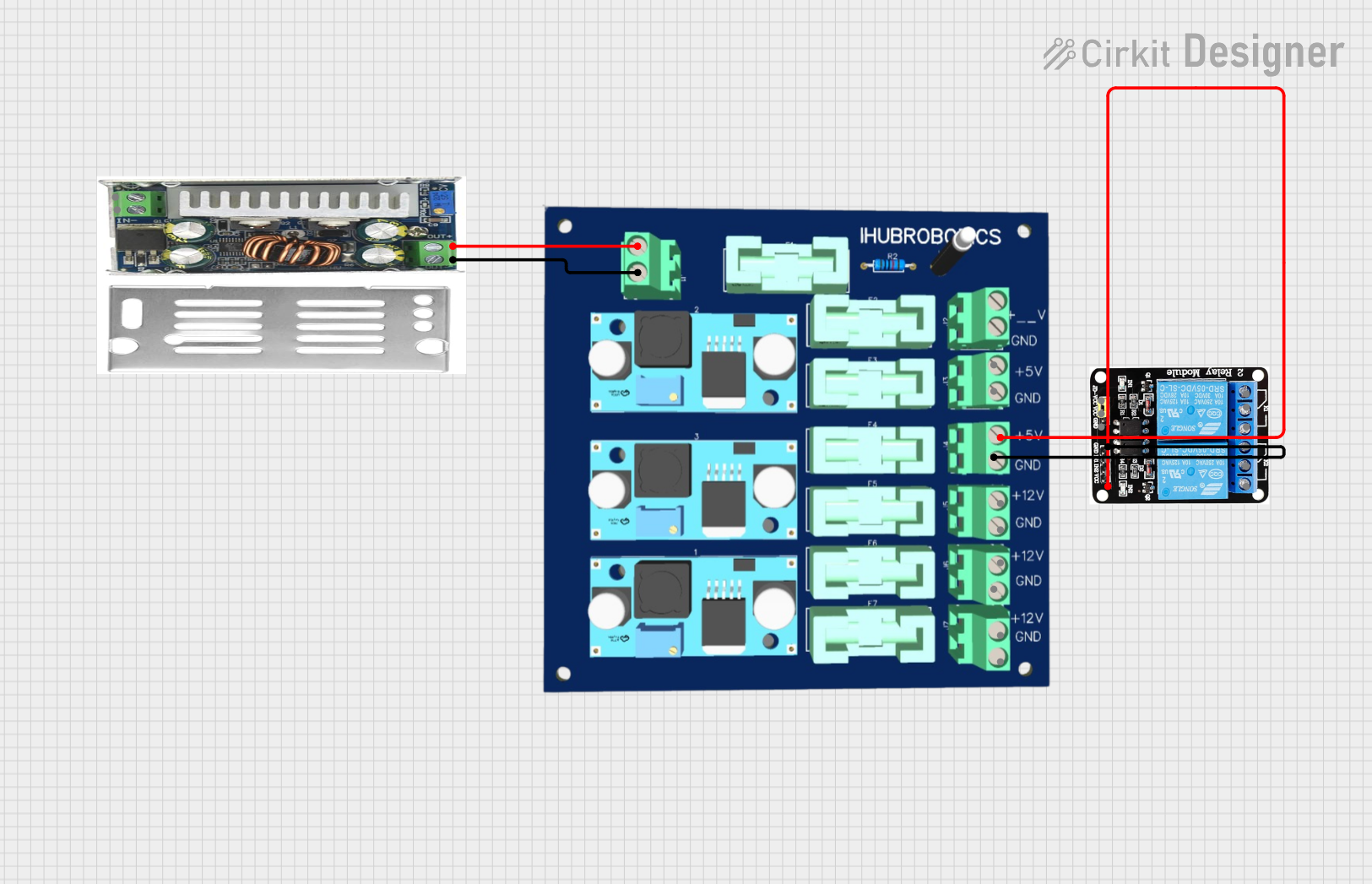
 Open Project in Cirkit Designer
Open Project in Cirkit DesignerExplore Projects Built with 12V Power Supply (1A per Channel)

 Open Project in Cirkit Designer
Open Project in Cirkit Designer
 Open Project in Cirkit Designer
Open Project in Cirkit Designer
 Open Project in Cirkit Designer
Open Project in Cirkit Designer
 Open Project in Cirkit Designer
Open Project in Cirkit DesignerCommon Applications and Use Cases
- Powering LED strips and lighting systems
- Supplying power to microcontroller boards (e.g., Arduino, Raspberry Pi)
- Driving small DC motors and actuators
- Providing stable power for sensors and modules in electronic projects
- General-purpose DC power supply for low-power devices
Technical Specifications
Below are the key technical details of the 12V Power Supply (1A per Channel):
| Parameter | Specification |
|---|---|
| Input Voltage | 100-240V AC, 50/60Hz |
| Output Voltage | 12V DC |
| Maximum Output Current | 1A per channel |
| Number of Channels | 1 or more (varies by model) |
| Efficiency | ≥85% |
| Ripple and Noise | ≤120mVp-p |
| Operating Temperature | -10°C to +50°C |
| Protection Features | Overload, short-circuit, overvoltage |
Pin Configuration and Descriptions
The power supply typically has the following input and output connections:
| Pin/Terminal | Description |
|---|---|
| AC-L | Live wire input for AC voltage |
| AC-N | Neutral wire input for AC voltage |
| GND | Ground connection for DC output |
| +12V | Positive 12V DC output |
Usage Instructions
How to Use the Component in a Circuit
Connect the AC Input:
- Identify the AC-L and AC-N terminals on the power supply.
- Connect the live (L) and neutral (N) wires from the AC mains to these terminals. Ensure proper insulation and secure connections to avoid electrical hazards.
Connect the DC Output:
- Use the +12V and GND terminals to connect the power supply to your circuit or device.
- Ensure the connected load does not exceed the maximum current rating of 1A per channel.
Power On:
- After verifying all connections, plug the power supply into an AC outlet and switch it on.
- Measure the output voltage with a multimeter to confirm a stable 12V DC output before connecting sensitive devices.
Important Considerations and Best Practices
- Load Limitations: Do not exceed the 1A current rating per channel to prevent overheating or damage to the power supply.
- Ventilation: Ensure adequate airflow around the power supply to avoid overheating, especially during prolonged use.
- Polarity: Double-check the polarity of the DC output connections to prevent damage to connected devices.
- Safety Precautions: Always handle the AC input connections with care and ensure the power supply is disconnected from the mains before making any changes to the wiring.
Example: Using with an Arduino UNO
The 12V Power Supply can be used to power an Arduino UNO via its barrel jack or VIN pin. Below is an example of how to connect and use it:
- Connect the +12V output of the power supply to the Arduino's barrel jack or VIN pin.
- Connect the GND output of the power supply to the Arduino's GND pin.
- Use the following Arduino code to blink an LED as a test:
// Simple LED Blink Example
// This code blinks an LED connected to pin 13 of the Arduino UNO.
void setup() {
pinMode(13, OUTPUT); // Set pin 13 as an output
}
void loop() {
digitalWrite(13, HIGH); // Turn the LED on
delay(1000); // Wait for 1 second
digitalWrite(13, LOW); // Turn the LED off
delay(1000); // Wait for 1 second
}
Note: Ensure the Arduino's onboard voltage regulator can handle the 12V input if using the VIN pin.
Troubleshooting and FAQs
Common Issues and Solutions
No Output Voltage:
- Cause: Loose or incorrect AC input connections.
- Solution: Verify the AC-L and AC-N connections and ensure the power supply is properly plugged in.
Output Voltage Fluctuations:
- Cause: Overloading the power supply or poor ventilation.
- Solution: Reduce the load to within the 1A limit and ensure proper airflow around the power supply.
Device Not Powering On:
- Cause: Incorrect polarity or insufficient current.
- Solution: Check the polarity of the DC output connections and ensure the connected device's current requirements are within the power supply's capacity.
Overheating:
- Cause: Prolonged use at maximum load or poor ventilation.
- Solution: Reduce the load or improve ventilation around the power supply.
FAQs
Q1: Can I use this power supply to charge a 12V battery?
A1: No, this power supply is not designed for battery charging as it lacks the necessary current regulation and charging profiles required for safe battery charging.
Q2: Is this power supply suitable for outdoor use?
A2: No, this power supply is intended for indoor use only. If outdoor use is required, ensure it is housed in a weatherproof enclosure.
Q3: Can I connect multiple devices to the same channel?
A3: Yes, as long as the total current draw does not exceed 1A per channel.
Q4: What happens if I exceed the 1A current limit?
A4: The power supply's overload protection will activate, shutting down the output to prevent damage. Reduce the load and restart the power supply.
By following this documentation, you can safely and effectively use the 12V Power Supply (1A per Channel) in your projects.